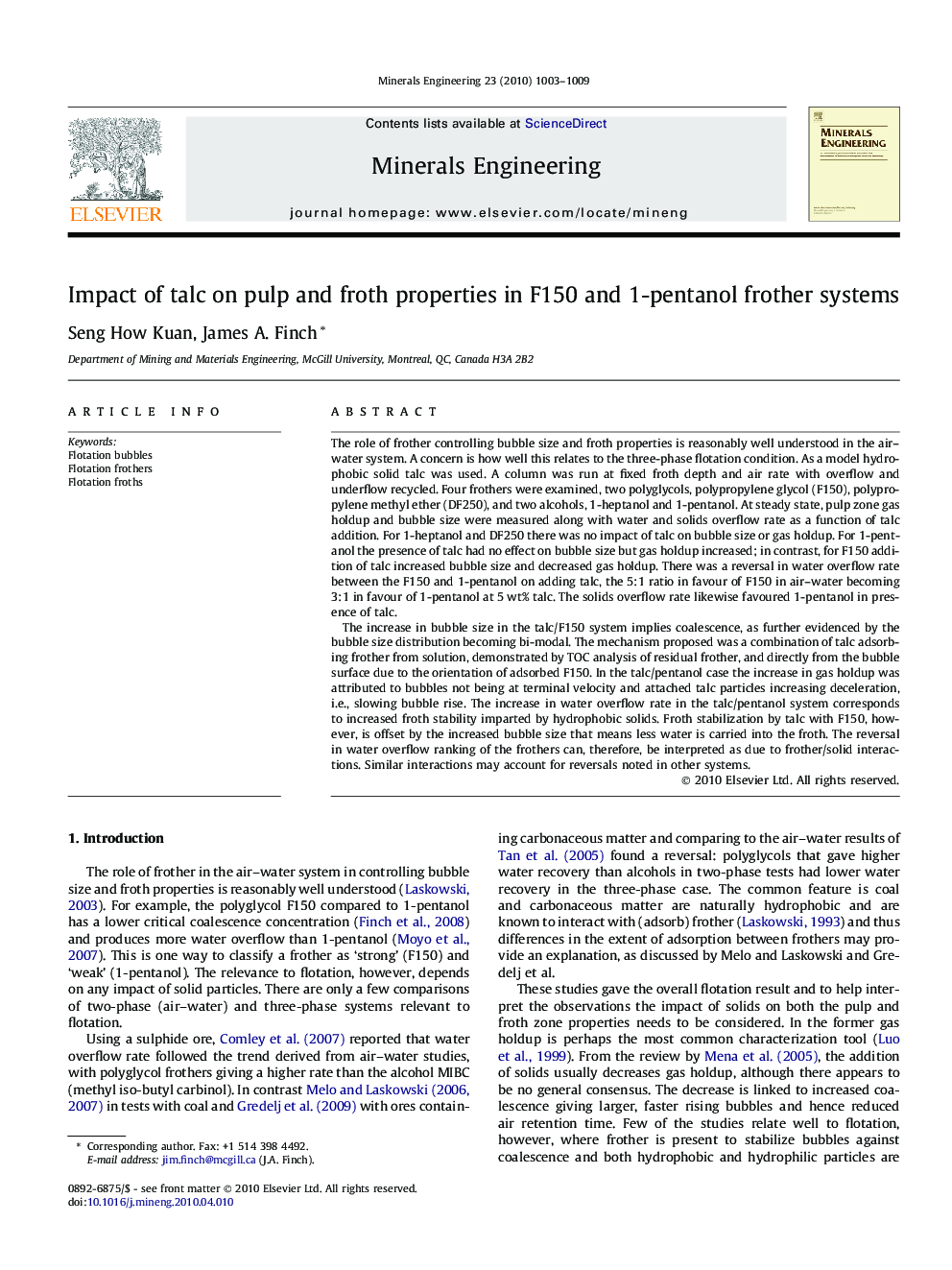| کد مقاله | کد نشریه | سال انتشار | مقاله انگلیسی | نسخه تمام متن |
|---|---|---|---|---|
| 234048 | 465383 | 2010 | 7 صفحه PDF | دانلود رایگان |

The role of frother controlling bubble size and froth properties is reasonably well understood in the air–water system. A concern is how well this relates to the three-phase flotation condition. As a model hydrophobic solid talc was used. A column was run at fixed froth depth and air rate with overflow and underflow recycled. Four frothers were examined, two polyglycols, polypropylene glycol (F150), polypropylene methyl ether (DF250), and two alcohols, 1-heptanol and 1-pentanol. At steady state, pulp zone gas holdup and bubble size were measured along with water and solids overflow rate as a function of talc addition. For 1-heptanol and DF250 there was no impact of talc on bubble size or gas holdup. For 1-pentanol the presence of talc had no effect on bubble size but gas holdup increased; in contrast, for F150 addition of talc increased bubble size and decreased gas holdup. There was a reversal in water overflow rate between the F150 and 1-pentanol on adding talc, the 5:1 ratio in favour of F150 in air–water becoming 3:1 in favour of 1-pentanol at 5 wt% talc. The solids overflow rate likewise favoured 1-pentanol in presence of talc.The increase in bubble size in the talc/F150 system implies coalescence, as further evidenced by the bubble size distribution becoming bi-modal. The mechanism proposed was a combination of talc adsorbing frother from solution, demonstrated by TOC analysis of residual frother, and directly from the bubble surface due to the orientation of adsorbed F150. In the talc/pentanol case the increase in gas holdup was attributed to bubbles not being at terminal velocity and attached talc particles increasing deceleration, i.e., slowing bubble rise. The increase in water overflow rate in the talc/pentanol system corresponds to increased froth stability imparted by hydrophobic solids. Froth stabilization by talc with F150, however, is offset by the increased bubble size that means less water is carried into the froth. The reversal in water overflow ranking of the frothers can, therefore, be interpreted as due to frother/solid interactions. Similar interactions may account for reversals noted in other systems.
Journal: Minerals Engineering - Volume 23, Issues 11–13, October 2010, Pages 1003–1009